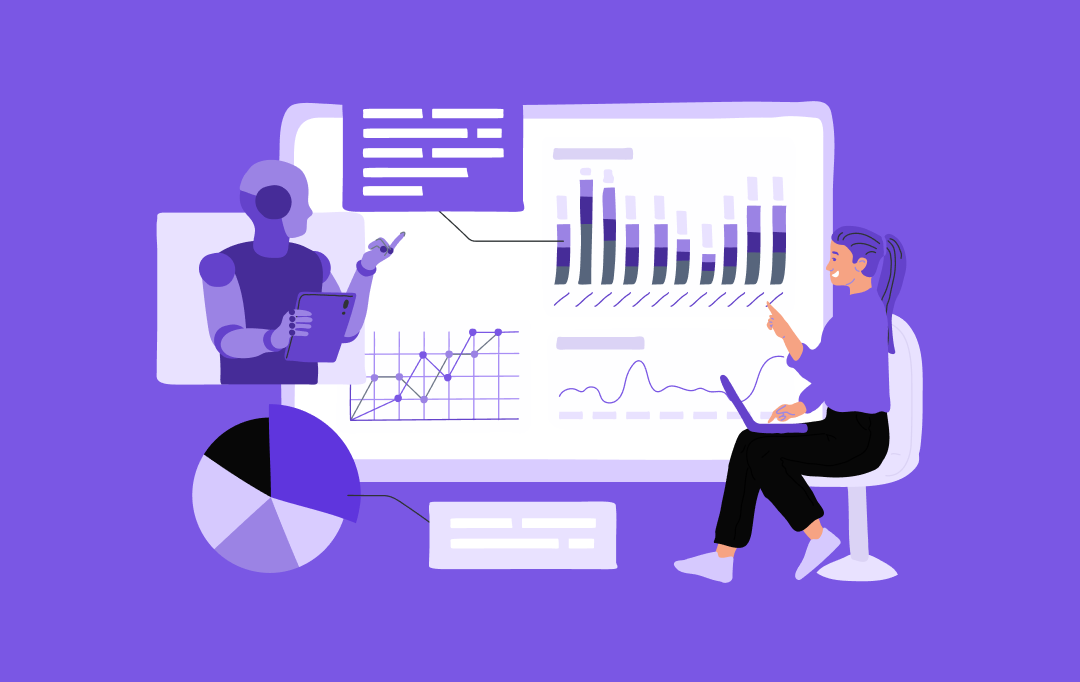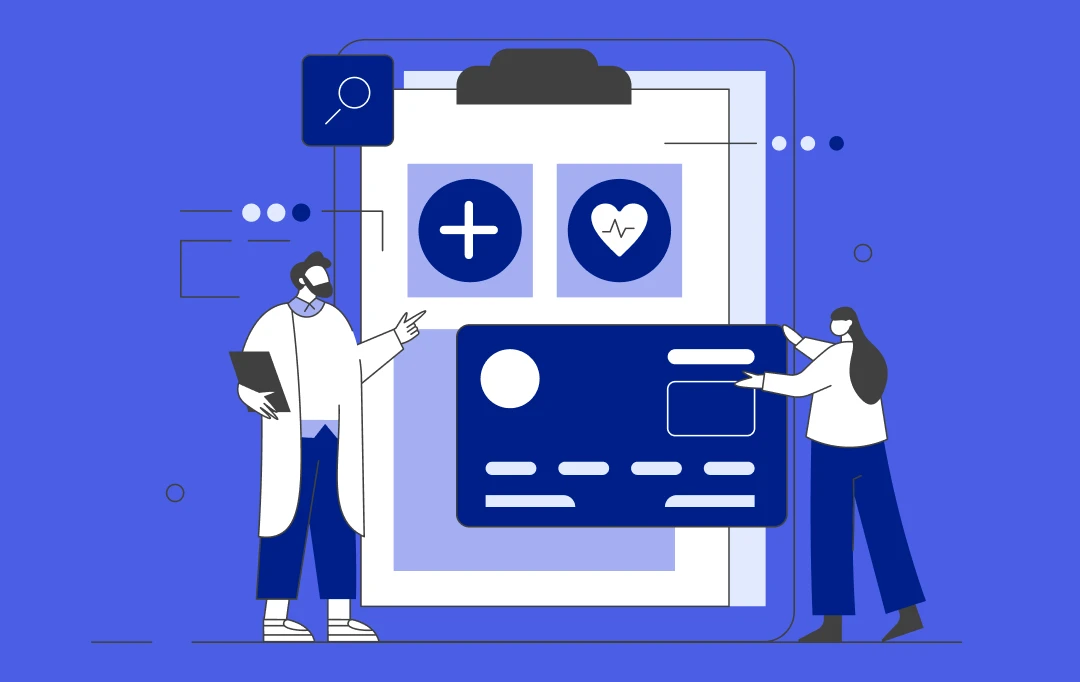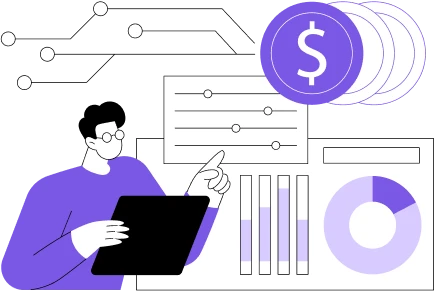- When Do You Need a Human Capital Management System?
- Core Features of HCM Software
- Benefits of Building Custom HCM Software
- Tailored Workforce Management
- Seamless Integration Across Departments
- Scalability and Adaptability
- Increased Employee Experience
- Effective Payroll and Compliance Management
- Data-Driven Decision Making
- Security and Confidentiality
- Competitive Advantage
- The Role of AI in Modern HCM Platform Development
- How to Build a Human Capital Management Software
- Requirement Analysis
- System Design
- Development and Customization
- Integration
- Testing
- Deployment
- Maintenance and Support
- Scaling and Improvements
- Factors Influencing the Cost of Building HCM Software
- Scope and Complexity of Features
- Platform and Technology Choices
- Customization and Integration Requirements
- Size of Organization and User Base
- Compliance and Security Requirements
- User Experience and Design
- Deployment and Maintenance
- Development Teams Experience & Expertise
- Implementation Timeline
- Reporting and Analytics Capabilities
- Monetization Models for HCM Systems
- Subscription-Based Model
- Per-Employee Pricing
- Feature-Based or Tiered Packages
- One-Time Licensing with Optional Support
- HCM Platform Adoption Challenges and Their Resolutions
- Resistance to Change
- Data Migration Complexity
- Coexistence with Existing Systems
- Compliance Risks and Security
- Let Appinventiv Be Your Partner in HCM Platform Development
- FAQs
Key takeaways:
- Custom HCM software centralizes HR data, automates processes, and delivers real-time analytics for smarter workforce decisions.
- Integrating AI, cloud, and automation transforms HR from a transactional function into a strategic business driver.
- Development costs and timelines vary widely; plan features, integrations, and compliance requirements carefully to ensure a successful launch.
- The right HCM platform improves employee experience, ensures compliance, and scales easily with business growth.
The current process of workforce management is not just about attendance tracking or payroll processing; it is about pulling talent, enhancing engagement, and driving strategic development. Modern-day organizations require a system that not only performs common HR functions but also provides practical information about employee performance, retention, and career growth. This is where Human Capital Management (HCM) software will be needed.
Siemens has implemented new digital HR technologies that include SAP SuccessFactors, AI, and Robotic Process Automation (RPA) to automate its HR processes (payroll, recruitment, and employee data management, etc.). These programs have enhanced efficiency, accuracy of data, and improved employee experience.
The fact that their results are impressive, however, is that a general lesson can be understood: an advanced HCM system elevates HR to a strategic business driver rather than merely a transactional one.
Recruitment is simplified, payroll and benefits are managed easily, compliance is improved, and real-time analytics is made available to workforce planning through HCM platforms. These systems are becoming smarter, leveraging technologies such as AI, machine learning, IoT, and cloud computing to automate repetitive tasks and predict talent trends, while also enabling employees to have personalized experiences.
Through the centralization of HR data, HCM enables organizations to make informed decisions, optimize resources, and align human capital with long-term business objectives. It is significant in the global market of HCM, which is estimated to reach the valuation of $41.3 billion in 2029 with a CAGR of 8.5% (Source: MarketsandMarkets). This increase depicts the increasing need for automation, analytics, and people-centered HR solutions.

The development of your own HCM software would enable the business to customize processes, combine sophisticated technologies, and develop a platform that not only handles people efficiently, but also optimizes their potential to make HR a real growth and innovation engine.
In this blog, we’ve put together everything you need to know about Human Capital Management (HCM) platforms. From understanding why your business needs one, exploring its key features and benefits, to the role of AI and other emerging technologies, the step-by-step process to build one, cost considerations, and even monetization models, we’ve covered it all in a single guide.
Let’s take a quick walkthrough and uncover how to build a human capital management software and how it can transform the way your organization manages its workforce.
Team up with Appinventiv to create a platform that drives efficiency and growth
When Do You Need a Human Capital Management System?
Organizations need an HCM system when HR operations become complicated, time-consuming, or fraught with errors, and then the organization can utilize the system. Indications that it is time to hire an HCM solution are:
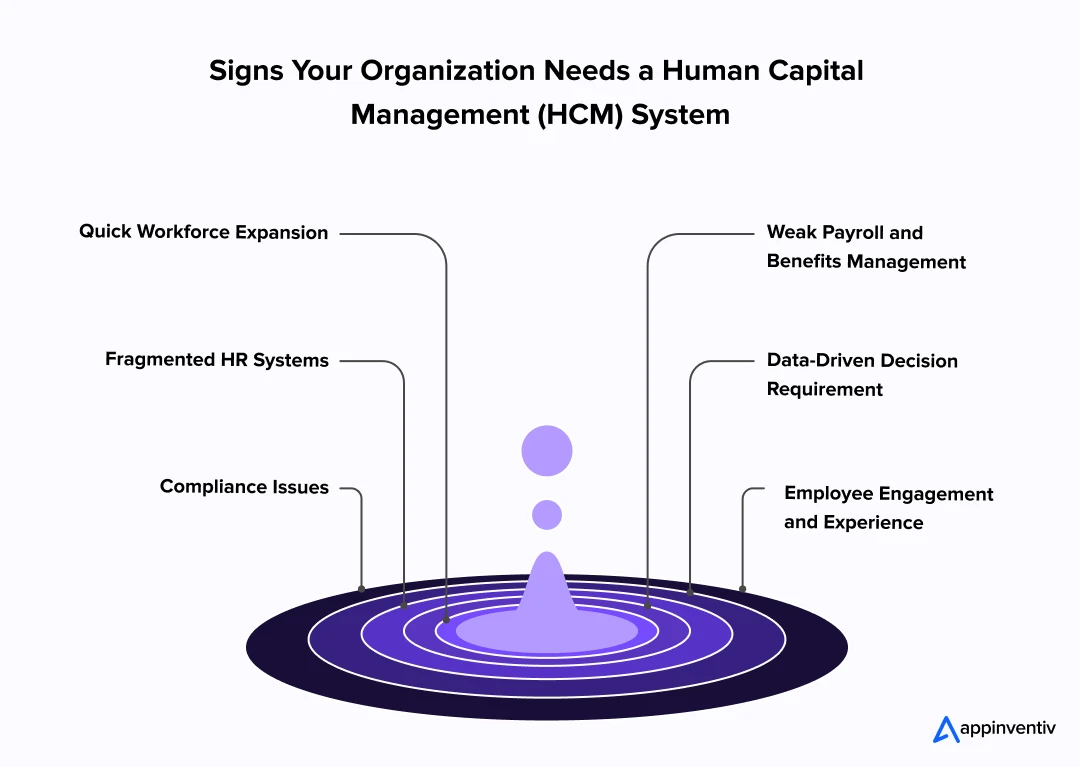
Quick Workforce Expansion: With the growth in the number of employees, manual HR systems fail to keep pace with the company.
Fragmented HR Systems: When payroll, attendance data, performance data, and recruitment data are all fragmented and divided among different tools, an HCM system consolidates and harmonizes operations.
Compliance Issues: Where keeping abreast with the labour laws, taxation policies, and reporting norms is cumbersome, an HCM platform ensures precision and minimizes the risk.
Weak Payroll and Benefits Management: Delays, errors, or redundancies in payroll operations or benefits management mean that they should be automated.
Data-Driven Decision Requirement: When the leadership needs analytic data regarding the performance of the workforce, engagement, or turnover, HCM systems will offer actionable data.
Employee Engagement and Experience: In situations where HR fails to provide an uneven, self-service experience, an HCM solution will improve accessibility, transparency, and satisfaction.
Core Features of HCM Software
Human Capital Management (HCM) software pulls together HR’s most important processes into one system. When you centralize employee data and automate tasks, companies see better accuracy, efficiency, and compliance that support workforce growth. Here’s what these features do:
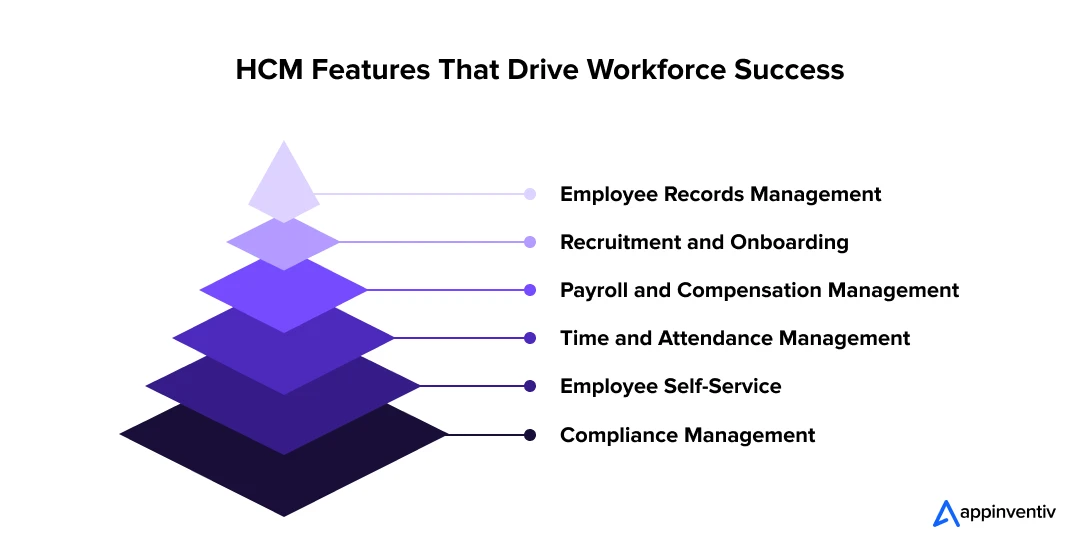
Employee Records Management: Stores employee profiles, personal data, job history, qualifications, and contracts in one place. Handles documents, digital signatures, and org charts so you can find information fast.
Recruitment and Onboarding: Tracks applicants, parses resumes, works with job boards, and schedules interviews. New employees get digital forms, e-signatures, compliance checks, training setup, and orientation plans.
Payroll and Compensation Management: Calculates salaries automatically, handles tax compliance, and manages direct deposits. Takes care of bonuses, overtime, reimbursements, multi-currency payments, and incentive structures.
Time and Attendance Management: Digital clock-in/clock-out, absence tracking, and shift scheduling with leave requests, overtime recording, and direct integration with payroll.
Employee Self-Service: Portals where staff can update personal details, download payslips, and check benefits with options to submit leave requests, track attendance, and access training materials.
Compliance Management: Updates labor law changes automatically, handles tax reporting, and enforces policies through audit trails, risk alerts, and document tracking to reduce legal risks.
These features make HCM solutions essential for modern businesses. Investing in human capital management software development lets organizations customize capabilities for their workforce needs. When HR functions work together in one platform, companies get better efficiency, transparency, and long-term workforce value.
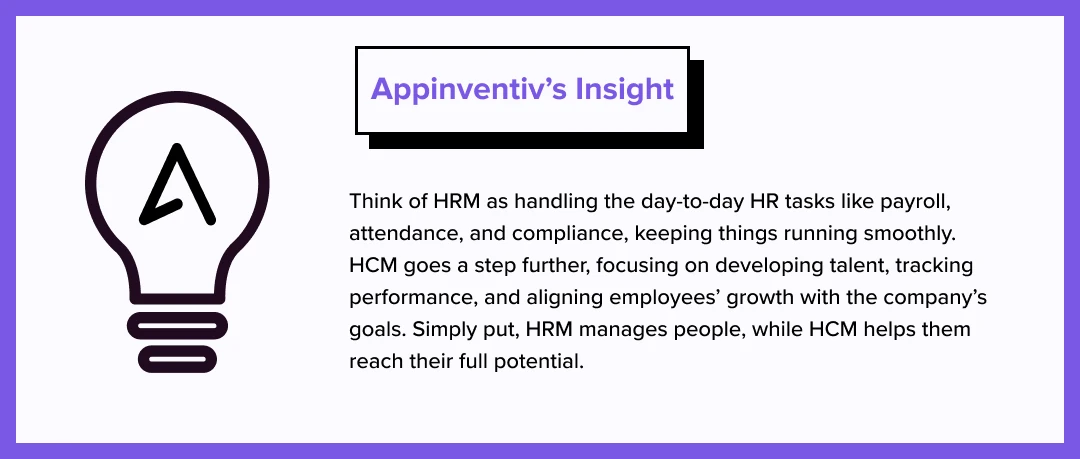
Benefits of Building Custom HCM Software
HCM platforms are vital in modern organizations as they centralize HR activities, automate repetitive work, and give concrete insights that can assist businesses in making smarter decisions regarding the workforce. The following are the best advantages of creating a custom HCM software:
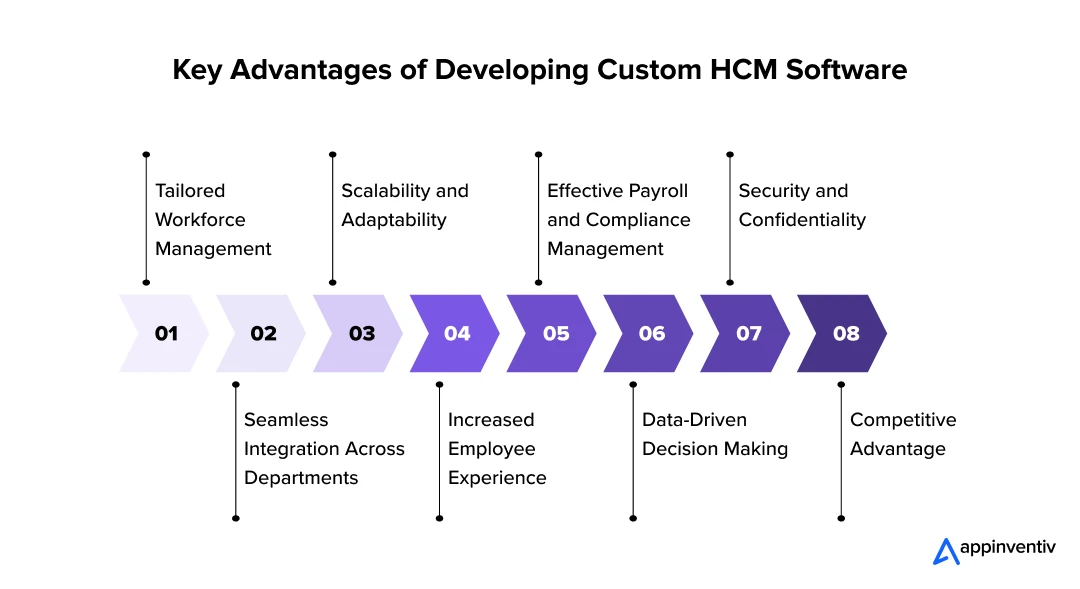
Tailored Workforce Management
Building your own HR system means you get exactly what your business needs, not what some software company thinks you should have. Human capital management software development lets you shape everything from how you hire people to how you track their performance.
Your recruitment process might be different from the company down the street, and that’s perfectly fine. Custom systems eliminate the workarounds and manual fixes that often accompany generic software. Your team gets processes that actually make sense, while managers see the data they need to make smart decisions about their people.
Seamless Integration Across Departments
When you invest in proper HCM system development, you’re building bridges between HR, payroll, finance, and operations that actually work. No more copying data between systems or dealing with numbers that don’t match up.
Everyone works from the same information, which means better decisions and fewer headaches. Your people can find what they need without jumping between five different applications. It’s the kind of setup that makes work flow naturally instead of fighting against clunky tools.
Scalability and Adaptability
By developing a human capital management system, organizations can enhance their HR capabilities in tandem with their growth. Custom systems would suit new employees, departments, or new places of business operation without significant upheavals.
Businesses can also customize the modules to the changing HR policies, labor laws, or industry standards. Such flexibility ensures that the HCM solution will be relevant and useful, promoting the long-term growth of an organization.
Increased Employee Experience
The HCM platform development investment will ensure the creation of a friendly interface that will enable employees to control their data, monitor performance, request leave, and access learning materials. An effective platform will decrease administrative bottlenecks, enhance interaction, and boost satisfaction.
Employees are more attached to their organization, and the HR teams are also able to concentrate on strategic initiatives and not on routine administrative work. The outcome is increased retention and morale in the workplace.
Effective Payroll and Compliance Management
Custom HCM payroll software development will provide timely and correct processing of salaries, simplify tax information, and enforce legal compliance. Automated workflows ensure that there are fewer manual errors, fewer disputes, and a clear audit trail where reporting can be done.
Operations are further streamlined through the integration of payroll and other HR functions like attendance and benefits. Companies are confident about compliance and can leave the free HR departments to do other, more valuable activities.
Data-Driven Decision Making
Bespoke HCM solutions consolidate employee information, enabling advanced analytics and insights that facilitate strategic decision-making. By monitoring trends in performance, engagement, and workforce measures, organizations can identify areas for improvement, manage resources effectively, and develop succession strategies.
The utilization of analytics in the human capital management software development process provides the leaders with intelligence that may be acted upon instead of relying on intuition to make decisions.
Security and Confidentiality
The tailor-made HCM is developed based on the organization’s needs and has high security measures that are custom-built. Sensitive information of employees, payrolls, and performance records is protected against unauthorized access and breach. The control of access levels and encryption of vital information ensures that businesses are confidential, adhere to privacy policies, and create trust among workers.
Competitive Advantage
The custom HCM platform development places organizations ahead of the business competition by enhancing the efficiency of HR, employee involvement, and operational agility. A system that is configured to meet business requirements is guaranteed to be adopted faster, more successfully, and give a positive ROI. Indeed, custom HCM software is not only an administrative tool but also a strategic asset and a crucial tech investment that enhances overall business performance.
The Role of AI in Modern HCM Platform Development
The application of AI is transforming the human capital management processes into being smarter, quicker, and more predictive, turning the HCM platforms into smarter ones. Automating routine work and workforce analytics allows AI to enable HR teams to concentrate on strategic efforts and enhance employee experience. The HCM systems in place today implemented several AI solutions to streamline recruitment, payroll, performance management and engagement.

Natural Language Processing (NLP): Provides automated screening of resumes, chatbots to respond to employee queries, and sentiment analysis to comprehend the use of the workforce.
Robotic Process Automation (RPA): Statistical processing of payrolls, leave requests, and attendance control are automated repetitive HR functions that minimize errors and conserve time.
Predictive Analytics: Anticipates employee turnover, fills gaps in skills, and facilitates the planning of the workforce based on data.
Machine Learning (ML): Personalization of learning and development programs, performance reviews and career path suggestions.
AI-Powered Recruitment Tools: Matches candidates to jobs based on their skills, experience, and cultural suitability in order to enhance the efficiency of hiring.
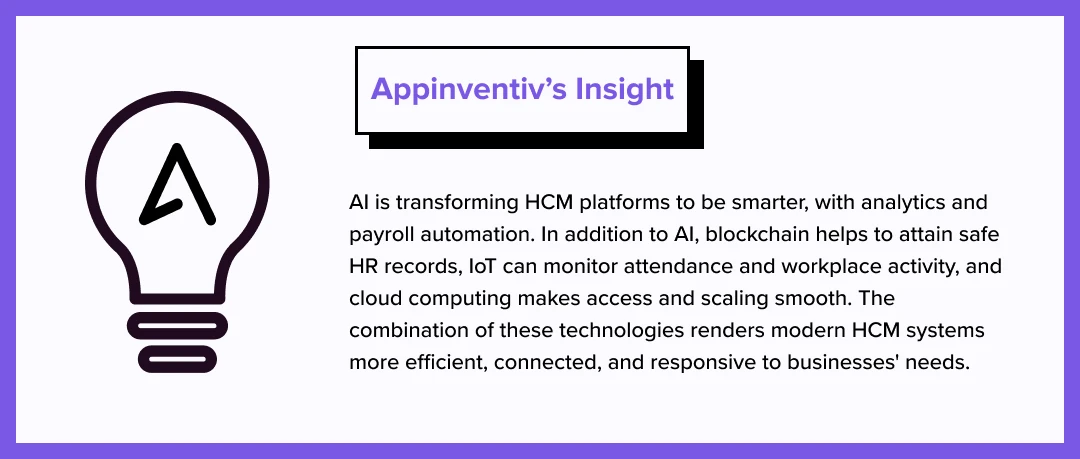
How to Build a Human Capital Management Software
The human capital management system development process follows a systematic method that will help achieve the organizational requirements, and at the same time be scalable and compliant. A well-defined process enables the HR teams to automate the workflow, enhance the accuracy, and facilitate long-term workforce strategies. Let’s have a quick look at the process:
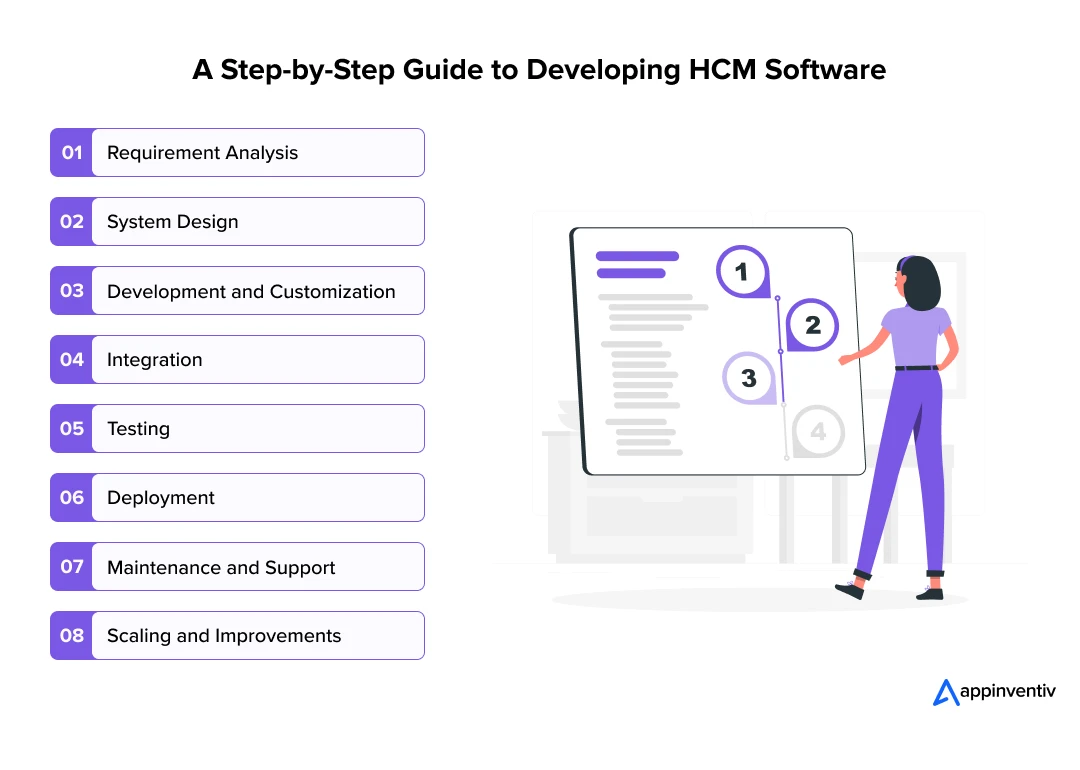
Requirement Analysis
The initial process in how to develop an HCM software is knowing what the organization needs, including HR, payroll, and workforce requirements. This entails gathering feedback from HR, management, and other stakeholders, reviewing existing processes, and identifying areas of pain.
Some of the critical elements, like recruitment, onboarding, payroll, performance management, and compliance regulations, are captured. Clear requirement analysis will make sure the HCM solution is positioned to business goals and will give some quantifiable value right at the beginning.
System Design
After the clarity of requirements, the formation of the system design takes place. This involves the definition of data structures, workflow models, and user interfaces. It also plans to integrate with the existing ERP, payroll, and attendance systems.
We focus on usability, security, and scalability. Strategic human capital management software development at this level is important to make the platform strong, flexible, and adaptive to future improvements.
Development and Customization
Some of the basic modules developed during the development process include employee records, payroll, recruitment, performance, and training management. Customizations are implemented to comply with the company’s regulations and industry-specific standards.
This stage also includes implementing role-based access, dashboards, notifications, and reporting features. It represents the practical execution of HCM system development, where design specifications are transformed into a fully functional platform.
Integration
Integration ensures that the HCM system is synchronous with other business applications. The API is employed to align the payroll, attendance, benefits, and HR analytics tools, and enables the sharing of data in real-time.
Integration also ensures that a system complies by verifying the accuracy of data related to compliance, leave balances, and payroll calculations. A well-integrated approach helps organizations make a human capital management system that functions efficiently across all HR processes.
Testing
In-depth testing is done to ensure verification of system functionality, security, and compliance. These include functional testing of payroll, attendance, and performance modules, security testing to safeguard sensitive employee data, and user acceptance testing to ensure ease of use.
Practical HCM platform development testing allows making sure that the system is stable, precise, and prepared to run with minimum mistakes and inconveniences in the operating process.
Deployment
Deployment is the implementation of the system throughout the organization, usually in stages, which begin with pilot groups. Training of employees and HR teams is done to facilitate easy adoption, and payroll modules are enabled to maintain the correct processing of salaries.
User access and security permissions are configured. This phase will guarantee that HCM payroll software is already live and embedded in routine HR practices.
Maintenance and Support
Continuous maintenance makes the HCM system safe, compliant, and sleek. Updates, bug fixes, and policy changes are implemented regularly in response to changes in laws and company requirements.
Support involves overseeing the work of the systems, fixing problems, and making some small improvements. Following a structured human capital management system development process ensures the platform remains reliable and adaptable over time.
Scaling and Improvements
With the expansion of the organization, it is possible to add more sophisticated analytics, AI-based talent management, and new modules to the system. It is possible to add new workflows, reports, and different user access privileges without interruption.
The HCM implementation process should include scalability planning to sustain the platform’s effectiveness in meeting changing workforce strategies.
Factors Influencing the Cost of Building HCM Software
Human Capital Management systems don’t come with fixed price tags. Development costs fall under the range of $30,000 to $300,000, depending on what you actually need. Basic setups covering payroll, employee files, and time tracking won’t break the bank. However, once you start incorporating sophisticated analytics, AI performance tools, multi-location management, and complex integrations, costs rise rapidly.
Smart planning means understanding what drives these numbers up. It’s the difference between building something that works and building something that works within budget for HCM system development.
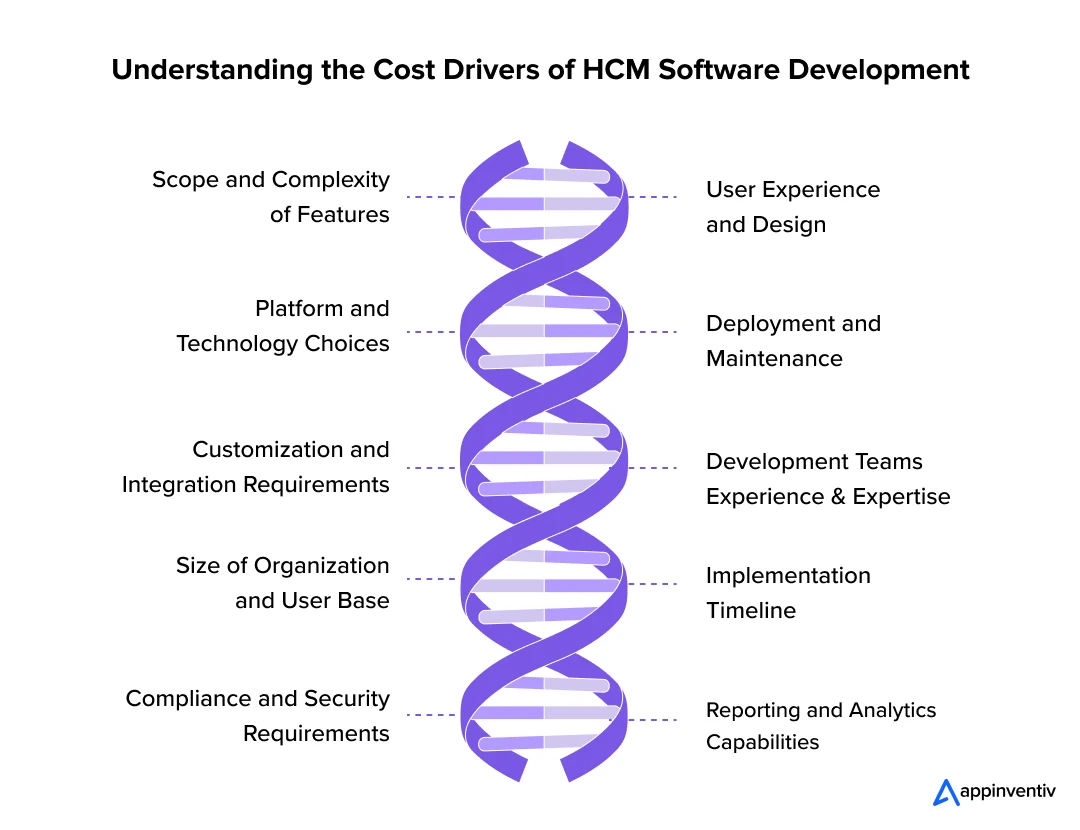
Scope and Complexity of Features
The modules and their level of sophistication are great determinants of the ultimate cost. Simple systems that have employee records, leave tracking, and payroll need less development effort, unlike advanced modules that are used in recruitment, performance analytics, training management, and custom reporting, which add much complexity. Proper planning plays a critical role in the development of the HCM platform.
| Feature Complexity | Example Modules | Estimated Cost Range |
|---|---|---|
| Basic | Employee records, leave management, payroll | $30,000 – $60,000 |
| Intermediate | Recruitment, onboarding, performance tracking, attendance | $60,000 – $150,000 |
| Advanced | AI-based analytics, succession planning, multi-location support, integrations with ERP/payroll | $150,000 – $300,000 |
Platform and Technology Choices
Your tech stack decisions will make or break your budget. Cloud platforms cut down upfront infrastructure costs, but you’ll pay monthly fees that add up over time. Go on-premises and you’re buying servers, licenses, and hiring IT people to keep everything running.
Today’s HR teams expect mobile access, seamless API connections, and bulletproof security – these aren’t nice-to-haves anymore. The technology choices you make early on will determine how much you spend on HCM payroll software implementation and whether your system can actually grow with your business.
Customization and Integration Requirements
Most companies discover that cookie-cutter HR systems simply don’t suffice. Sure, off-the-shelf options look cheaper initially, but they fall short when you need specific payroll calculations, custom performance tracking, or unique leave policies that match your industry.
Then there’s the integration headache; connecting your accounting system, time clocks, and benefits platforms takes serious development work. These customization needs often become the biggest chunk of your cost to build human capital management software, so plan accordingly.
Size of Organization and User Base
The number of employees and system users directly impacts development complexity and costs. Larger organizations with multiple departments and locations require more sophisticated user management, detailed reporting structures, and role-based access controls.
These scaling requirements demand additional development time and robust infrastructure planning. Understanding these factors influencing cost for developing HCM software helps organizations budget appropriately and build systems that can handle future growth without major overhauls.
Compliance and Security Requirements
HCM systems handle sensitive employee data and must meet strict regulatory standards, including labor laws, tax codes, and privacy regulations. Essential security features like data encryption, secure user authentication, comprehensive audit trails, and compliance reporting require specialized development expertise.
These security and compliance elements represent a significant portion of human capital management software development costs but are necessary to protect employee information and avoid legal complications.
User Experience and Design
Good UX design increases employee involvement, adoption, and efficiency. This involves user-friendly dashboards, self-service portals that are mobile-friendly, personalized reporting features, and interactive alerts.
These user-friendly interfaces need extra design and coding and are factored into the HCM platform development costs. As a long-term ROI focus, usability improves investment returns and minimizes overheads on HR support.
Deployment and Maintenance
The deployment model (cloud, on-premises, or hybrid) directly affects both initial and recurring expenses. While cloud implementations are scalable and reduce hardware costs, on-premises setups require dedicated IT efforts, along with ongoing maintenance, updates, bug fixes, and support to remain reliable.
Planned implementation also ensures that the HCM payroll software will continue to run smoothly, serve HR processes effectively, and remain flexible to meet new needs.
Development Teams Experience & Expertise
The cost and quality of the system depend on the experience and expertise of the development team. Engaging a dedicated vendor can be costly in the short run but provides scalable and secure, and compliant solutions.
On the other hand, weaker teams may save money at the outset; however, they may extend the time and make more mistakes. This is one of the major factors to be considered when considering the cost to develop the human capital software.
Implementation Timeline
Shorter project time lines demand increased resources, development activities running in parallel, or extra time working overtime, which increases costs. The gradual or incremental deployment can save initial costs but increases the time of deployment.
Timeline management is a critical aspect of factors influencing cost for developing HCM software and must be aligned with organizational priorities and readiness.
Reporting and Analytics Capabilities
State-of-the-art analytics, predictive dashboards, and customizable reporting demand extra coding, data modeling, and integration work. These features require organizations planning to use AI to tackle workforce insights or track KPI details to allocate funds.
The integration of analytics is a crucial component of the HCM software development and increases the strategic decision-making processes.
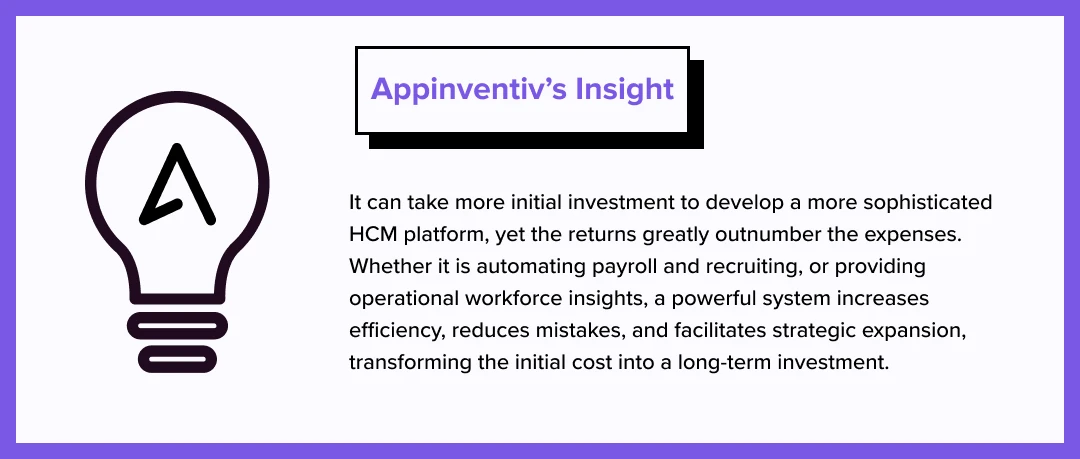
Monetization Models for HCM Systems
Knowing how to build a human capital management software goes beyond just coding features; you need a solid plan for making money from it. Pick the wrong pricing strategy, and even the best system won’t survive in the market. The right monetization approach drives adoption while keeping your business profitable over the long haul.
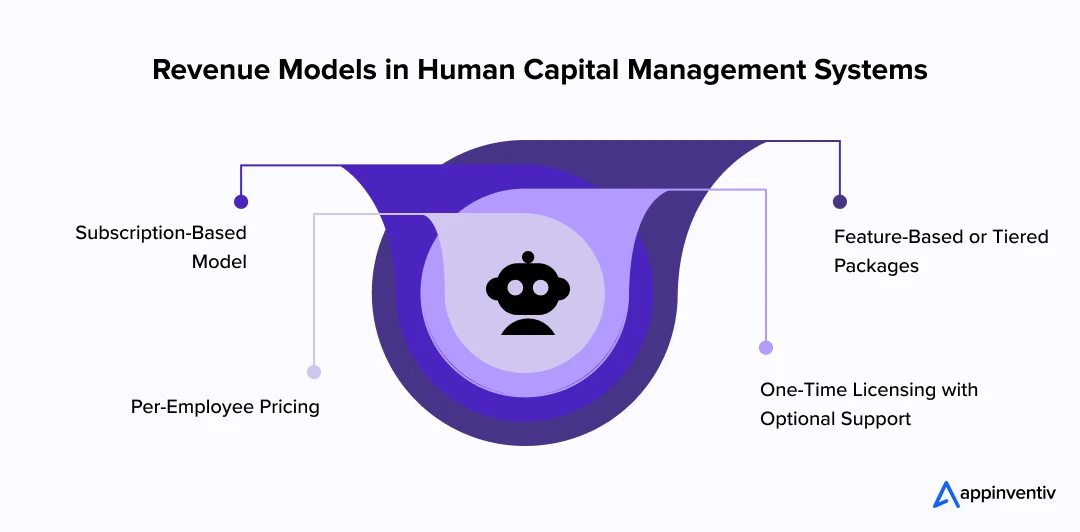
Subscription-Based Model
Most successful human capital management software development projects use recurring subscriptions because they work for everyone involved. Companies get regular updates, cloud hosting, and ongoing support without huge upfront costs. Vendors enjoy a predictable monthly revenue they can count on. Different pricing tiers let small startups pay less while enterprise clients get premium features. It’s straightforward and scales naturally as businesses expand.
Per-Employee Pricing
This pricing structure ties directly to workforce size, which makes budgeting simple for HR departments. Companies with seasonal workers or rapid hiring cycles appreciate paying only for active employees rather than fixed-seat licenses. The math is transparent; more people means higher costs, fewer people means lower bills. It eliminates the guesswork around capacity planning.
Feature-Based or Tiered Packages
Breaking down functionality into different packages lets companies buy exactly what they need without paying for bells and whistles they’ll never use. Basic HR tracking for smaller teams, advanced analytics for data-driven organizations, and full payroll integration for comprehensive management, each tier serves different business requirements. Companies seeking the best HCM software can align their budget with their actual needs, avoiding overpayment for unnecessary enterprise features.
One-Time Licensing with Optional Support
The traditional software purchase still has its place, especially for companies that prefer owning their systems outright. Pay once, install on your servers, and you’re done, no monthly bills eating into your budget. Support contracts become optional extras rather than mandatory expenses. This appeals to organizations with strong IT departments who want complete control over their software environment and upgrade timeline.
Let our experts help you design strategies that balance profitability with user satisfaction
HCM Platform Adoption Challenges and Their Resolutions
Adopting an HCM platform can be transformative, but the transition is not without obstacles. From change management to data security, addressing these challenges with the right strategies ensures a smoother and more successful implementation.
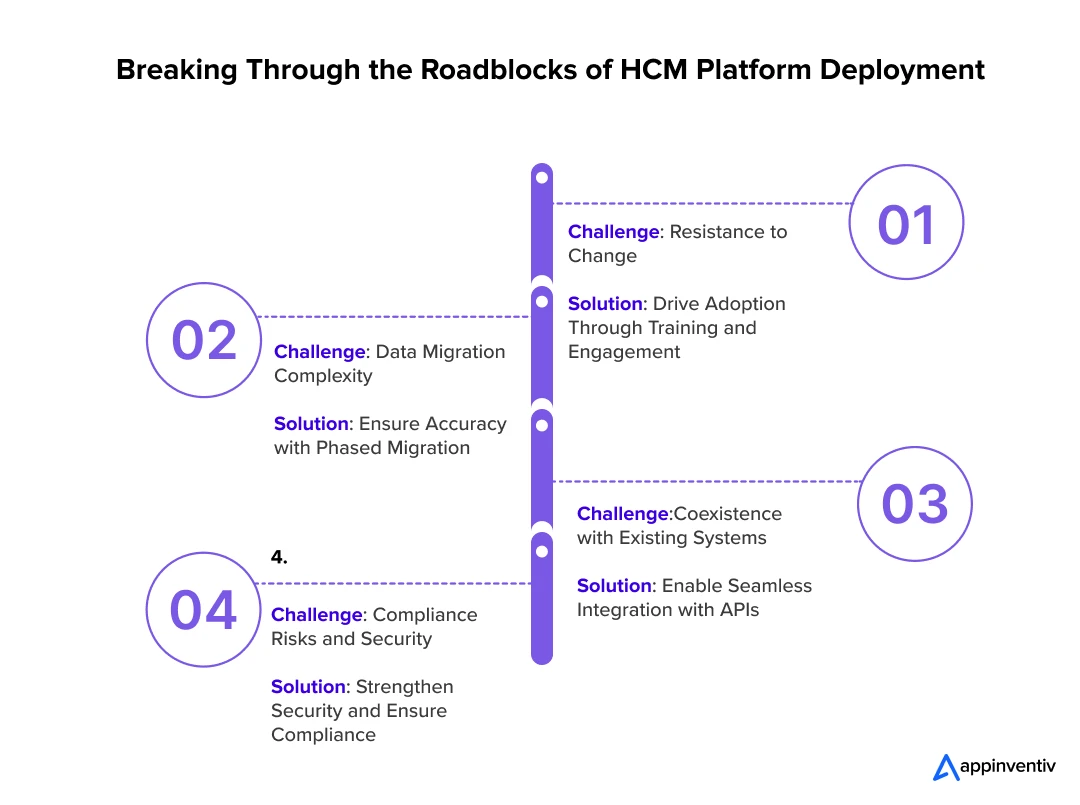
Resistance to Change
Organizations that are implementing a new HCM system face the issue of employee resistance. Teams tend to use what they already know and do not want to have their way of life interrupted.
Solution: Hold workshops, share success stories, and highlight the system’s benefits in alleviating workload. The active participation of the HR personnel during the rollout also develops confidence and easier adoption.
Data Migration Complexity
Moving a huge bulk of employee data off the legacy systems may lead to errors, duplicates, or even loss of data. This causes delays in pay, timecard, or compliance log.
Solution: Phase migration with extensive testing on every stage. Collaborating with seasoned software development teams in human capital management would ensure the accuracy and continuity of the data.
Coexistence with Existing Systems
Businesses can be tied to ERP, CRM systems, and payroll systems that do not necessarily integrate well with a new HCM system. Lack of proper integration may result in silos and inefficiencies.
Solution: Integrate plans at the very beginning of HCM implementation and select platforms with APIs and built-in connectors to ensure easier integration.
Compliance Risks and Security
HCM systems handle sensitive employee information, including payroll and performance-related details. Any security breach may lead to breaches or regulatory fines.
Solution: Implement powerful encryption, access control, and make the platform meet the international and local labor laws, such as GDPR or HIPAA.
Let Appinventiv Be Your Partner in HCM Platform Development
The future of human capital management is about platforms that work with people, not just track them. Organizations everywhere are replacing their outdated HR systems with more advanced tools, those powered by AI, predictive analytics, blockchain, and cloud technology that actually make a meaningful difference.
These innovations are changing the entire recruitment process, how teams stay engaged, and how leaders access workforce performance data when they need it most. Employees want more from their workplace experience now, especially with hybrid models becoming standard.
Companies need HCM platforms that can deliver personalized experiences while handling the automation side seamlessly. Building the right HCM solution isn’t something you can put off anymore; it’s become a strategic necessity if you want to stay competitive.
At Appinventiv, we specialize in delivering custom HCM software that addresses real business challenges. As a trusted custom software development services company, we combine deep technical expertise with a strong understanding of the day-to-day hurdles HR teams encounter.
From payroll automation and advanced analytics to AI-driven talent acquisition and connecting with your ERP/CRM systems, everything we build serves your specific business goals. Our dedication to excellence is best reflected in the words of our clients, whose testimonials highlight the real impact of our solutions. Working with Appinventiv means you get a partner committed to innovation and long-term value, someone who helps transform your HR operations into something that drives real growth and employee satisfaction.
Connect with our experts today!
FAQs
Q. Why build an HCM solution?
A. Going for human capital management software development helps organizations to centralize HR operations, simplify workflows, and obtain actionable information about employee performance.
A bespoke HCM system enhances effectiveness in recruitment, payroll, performance management, and compliance, offering a customized experience to both HR departments and personnel. It also facilitates the strategic decision-making process by ensuring that the workforce data is combined in one platform.
Q. How to develop human capital management software?
A. Knowing how to build a human capital management software implies several major steps in order to make it address the demands of the organization and incorporate major HR functions:
- Define HR Requirements: Discover fundamental processes such as recruiting, payroll, performance, and compliance.
- Design Workflows and Modules: Design plan dashboards, employee portals, and reporting tools.
- Select Technology Stack: Select stable and safe frameworks and databases.
- Design the Application: Construct the front, back, and back-end, as well as core HR features.
- Add Essential Service Integrations: Payroll, attendance, benefits integration, as well as ERP/CRM values.
- Test and Deploy: Perform quality tests, resolve problems and start the system.
Q. How long does it take to build HCM software?
A. The schedule of development is based on the complexity and scope of the system. The simplest HCM solution with the necessary modules can be implemented in approximately 4-6 months, and a full-scale platform with the latest analytics, payroll, and mobile access can be established in 9-12 months or more. Customization, integrations, and test phases are also relied on in timelines.
Q. What is the cost to develop human capital management software?
A. The cost to build human capital management software depends on different factors, including features, customization, deployment model (cloud or on-premise), and the size of the team. Simple platforms can begin with $50,000 – $80,000, and complex platforms with payroll, analytics, and mobile modules are over $300,000. Other expenses are regular maintenance & updates and optional implementation services.
Q. Can HCM software integrate with existing ERP or CRM tools?
A. Yes. The contemporary HCMs are developed to be compatible with ERP, CRM, and other enterprise applications. Integration enables the free flow of data across departments, reducing duplication and enhancing reporting capabilities. APIs and middleware are typically used during HCM implementation to integrate payroll, attendance, recruitment, and performance modules with existing enterprise applications.


- In just 2 mins you will get a response
- Your idea is 100% protected by our Non Disclosure Agreement.
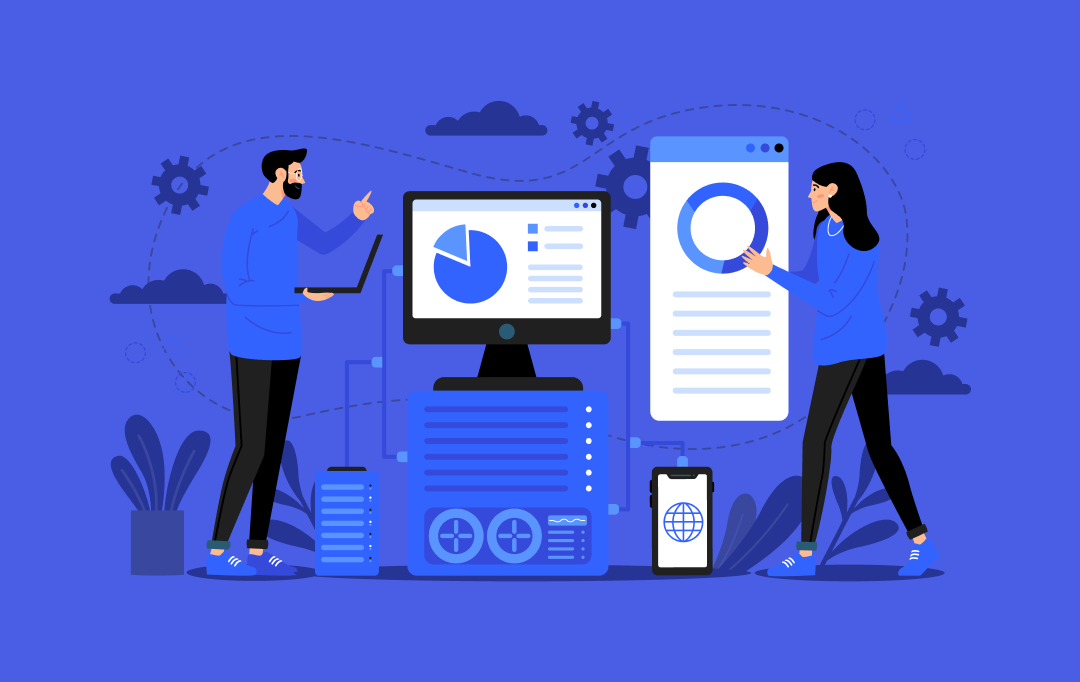
How Much Does It Cost to Build a White-Label Enterprise Procurement Software?
Key takeaways: The development of white-label enterprise procurement software typically costs between $50,000 and $500,000, depending on complexity and features. Key features include vendor management, budget tracking, purchase approvals, and invoice automation. Flexible monetization models - from modular licensing to integration fees- can future-proof revenue streams. Building a custom white-label solution gives you long-term control…

A Clear Breakdown of Custom Software Development Costs for Businesses in Canada
Key takeaways: Custom software in Canada typically ranges from CAD 55,00 to 550,000 ($40,000 to $400,000), depending on scope, integrations, and compliance. Costs rise in regulated sectors due to PHIPA, PCI DSS, AML rules, and strict Canadian data residency requirements. Planning, modular architecture, and cloud native services help control the software development cost in Canada…
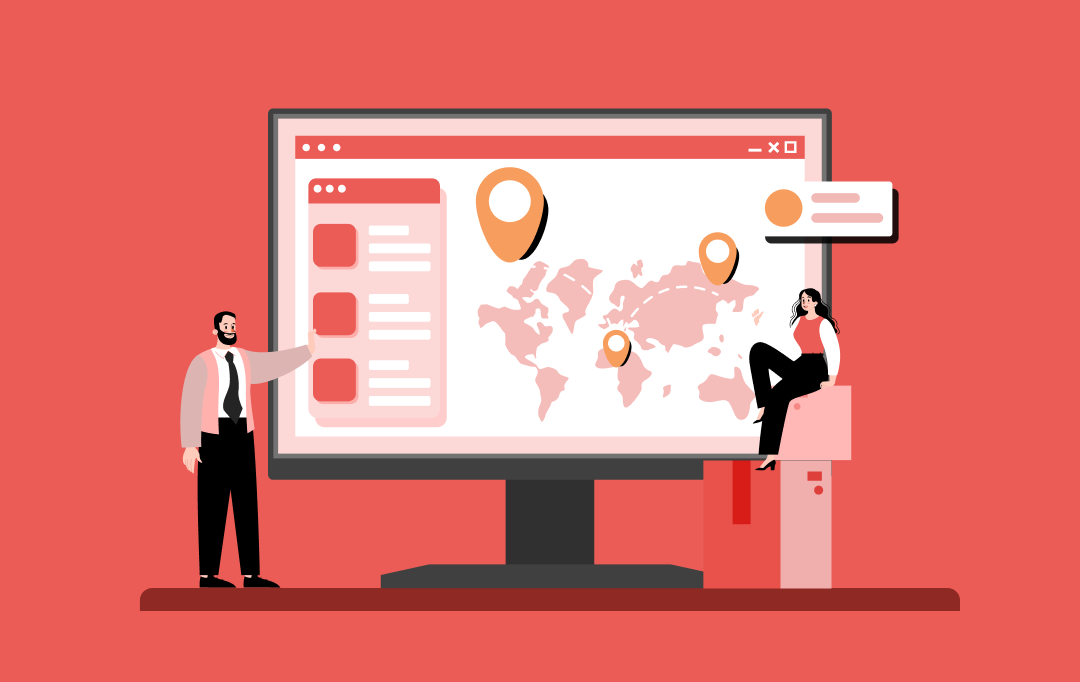
The Real Cost of Building Professional Delivery Management Software
Key takeaways: Custom delivery management software has complete flexibility, scale, and integration, which conforms to the distinctive requirements of business. Fluid connection to ERP, CRM, and payment systems also introduces a large amount of complexity and additional cost, but is the key to efficiency. It is important to design scalable systems to grow in the…












